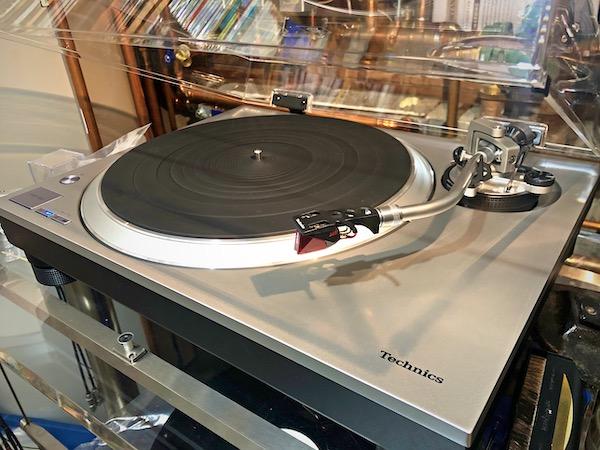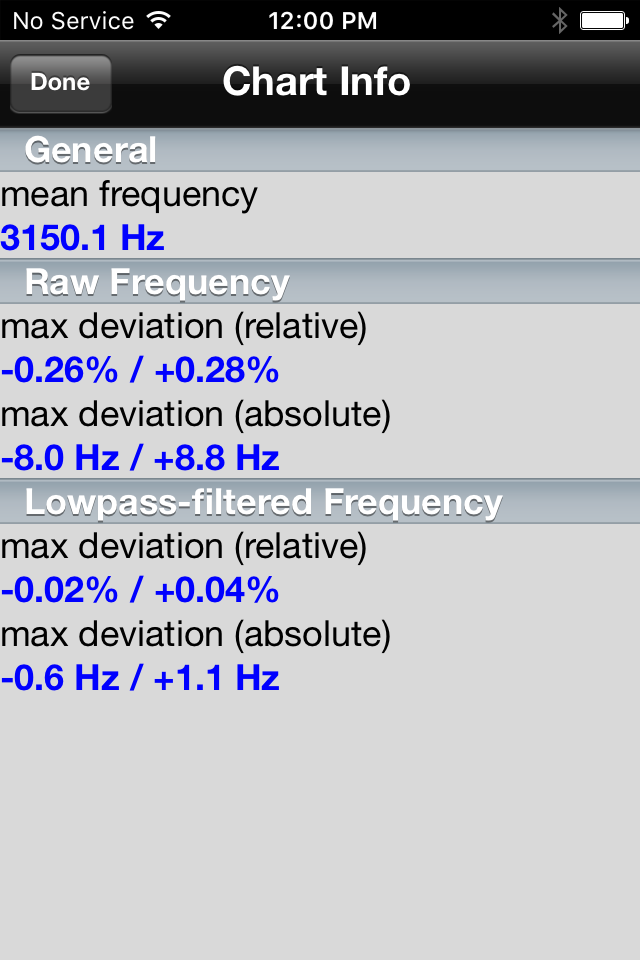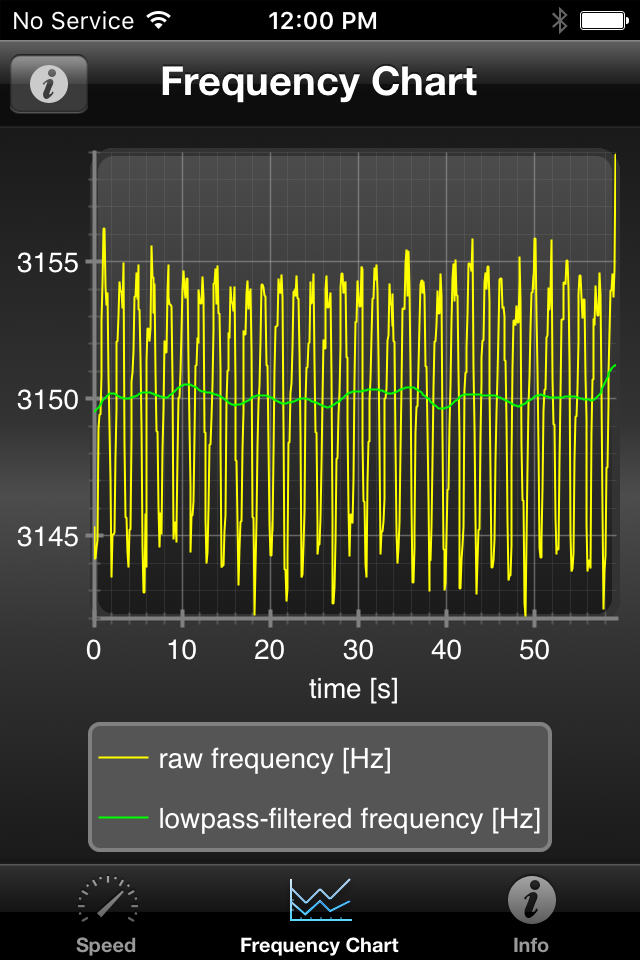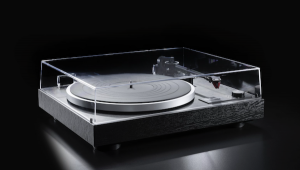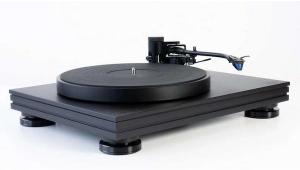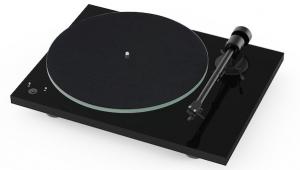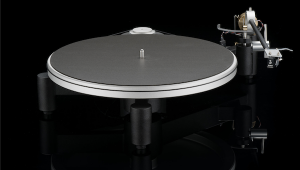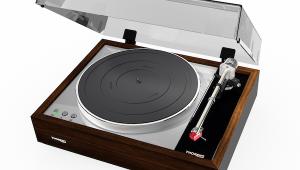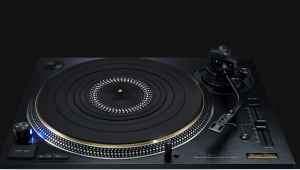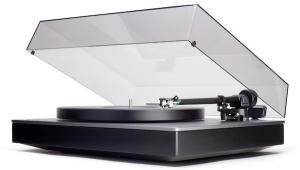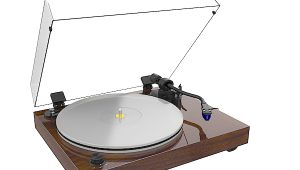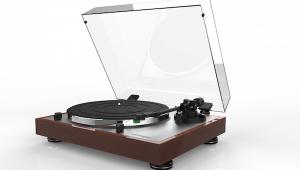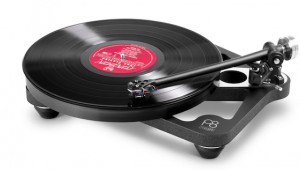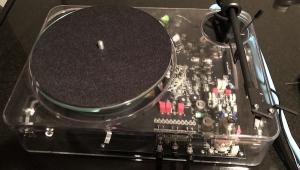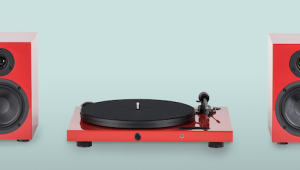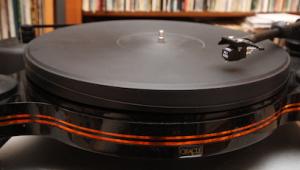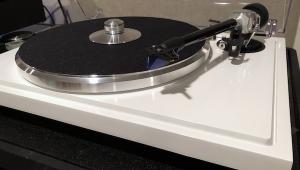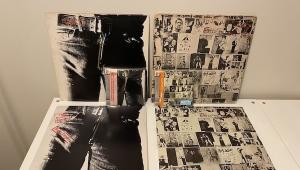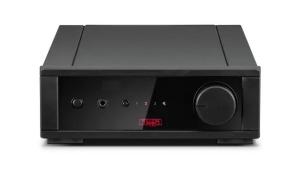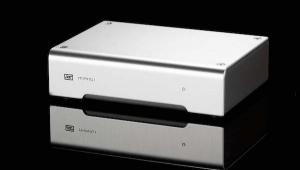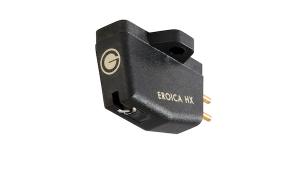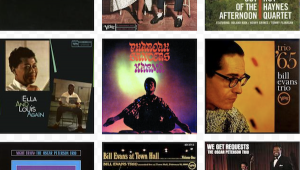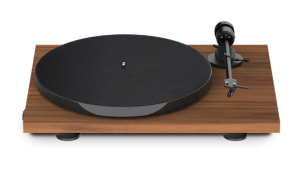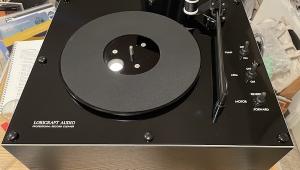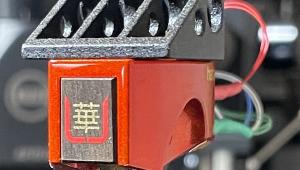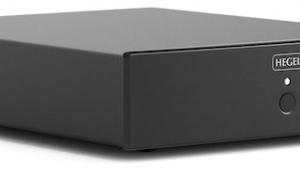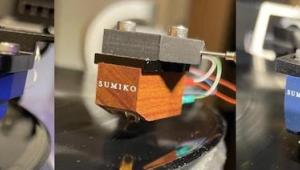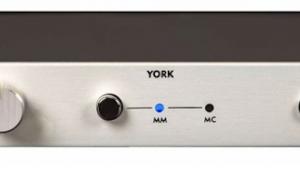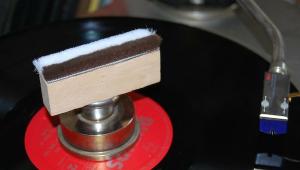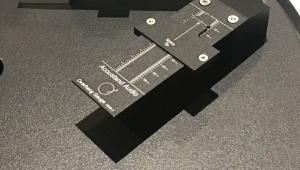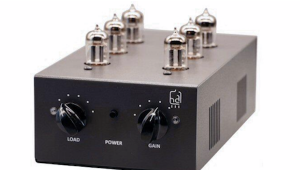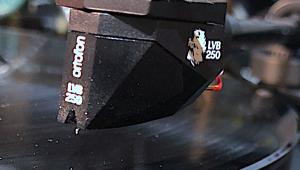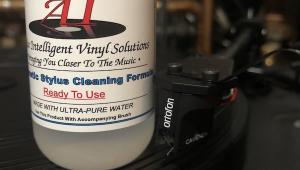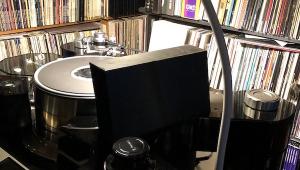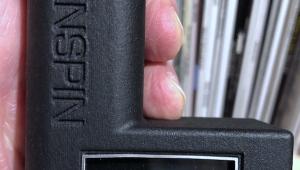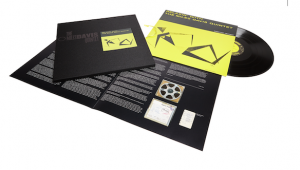With the SL-1500C Technics Cuts the Price But Not the Sound Quality
Here, the 13 inch, 4.5 pound (including rubber mat) platter is of die-cast aluminum, with its back surface damped by a rubber compound. The chassis is a dual layer design consisting of die cast aluminum and a rigidly integrated layer of ABS (Acrylonitrile butadiene styrene) mixed with glass fiber. The feet combine springs and rubbers to produce “optimal damping characteristics”.
Technics provides this platter and chassis blow up:
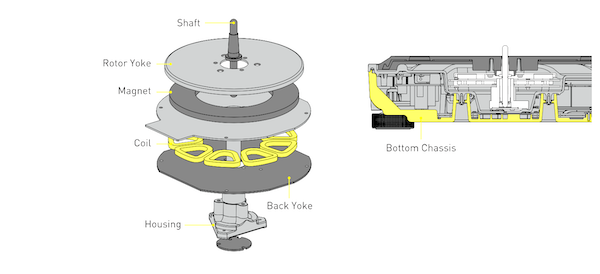
The “S”-shaped aluminum arm with removable head shell looks similar to those found on more expensive Technics ‘tables. It has an effective length of 230mm (9 1/16th inches), with an overhang of 15mm and features the same gimbal bearing construction and machined housing used on the more costly ‘tables, though it’s doubtful the bearing tolerances are equally low. That said, unlike the arm included on the recently reviewed similarly priced Thorens TD402DD turntable, on this arm, zero play could be felt.
To keep the costs down Technics chose to eliminate the variable pitch control and “DJ light” found on some more costly models. That made easy the decision to remove the then superfluous inscribed platter strobe.
The threaded VTA/SRA adjustment feature found on the more costly turntables was also purged to save money yet you can still easiy and accurately adjust VTA/SRA. The arm mounts to a platform that, like the ones found on more costly ‘tables, can be raised or lowered—just not by rotating a knurled ring. Instead, after unlocking the platform )as you would on the other arms), you have to manually lift and/or lower the friction-fit platform, which will remain at the set height. Height marks on the platform’s side let you adjust and return to a previous setting.
Added features include an Ortofon 2M Red, built-in defeatable MM phono preamp, and end-of-play arm auto-lift. Contrary to some misinformation posted by a reader on this website under the Thorens review, the auto-lift feature is also defeatable via a rear panel mounted switch so if a record does have grooves beyond the auto-lift’s preset and not adjustable lift position, you can still play the entire side without the arm prematurely lifting.
The fit’n’finish of this turntable is outstanding. Observing the gap between the platter periphery and the raised chassis showed that the platter machining is impressively low tolerance. The only manufacturing gaffe was the out of round rubber mat—hardly a disqulifier.
In case you’re still wondering how Technics got the price down from $4000 for the SL-1200G to $1199 for the SL-1500C, the 1500C is manufactured in Malaysia rather than in Japan.
Easy Set Up With One Hitch
Setting up the ‘table is easy thanks in part to the pre-mounted (in the removable head shell) Ortofon 2M Red. It’s so basic a set-up procedure I won’t detail it. However, the instructions for choosing either the built-in phono preamp or using an outboard one (or one built into an integrated amplifier and receiver) are so unnecessarily complex and confusing that even this turntable set-up veteran had trouble following and/or understanding them!
Fortunately, the instruction manual that came with the review sample is labeled in bold letter “TENTATIVE”. I could write these and make them so much easier to understand…but it’s not my job! One oddity: the arm on the rest sits oddly “low to the ground”. At first I thought it might have been damaged in shipping but no, it just sits “low to the ground”.
Speed Accuracy and Consistency
As you can see the SL-1500C runs precisely “on speed” and its speed variations are as minimal as you’d hope for from a direct drive turntable or any turntable, particularly at this price point. As with the other, more costly Technics ‘tables this one can spin as well at 78.
Solid Sound, Impressive ‘Rhythm’n’Pacing’
Chrissie Hynde’s recent jazz album Valve Bone Woe (V.B.W. 538504491 2 LPs) is a first class affair featuring a big band and lush string section recorded at AIR Studios. The spacious recording featuring generous amounts of microphone leakage that lets you really hear the big former church’s acoustics gets a solid “9” for sound. Marius de Vries and Eldad Guetta almost steal the show respectively, with their production and arrangements, but Hynde demonstrates that she can torch it up with the greats and is 100% comfortable singing in this genre—it’s easy enough if you have the resources to hire the best musicians, arrangers and recording venues. It’s another thing to deliver it sufficiently well to not have participated in a disaster of one’s own making!
Eric Boulanger mastered the double LP, gatefold packaged set at his The Bakery (located in a no longer used projection booth/screening room on the Columbia Pictures Culver City lot) using a seriously upgraded ½ speed lathe previously owned by the late Stan Ricker. Optimal pressed in Germany.
In other words, this is not a “let’s cash in on the vinyl ‘craze’” production. Hynde put in the money to produce a worthwhile record and what’s in the grooves is commensurate with the production and the packaging. (I’ll shortly include the last few paragraphs in a more detailed record review!).
The built-in phono preamp is of the “gets the job done okay” variety. It’s quiet, but harmonically drab and texturally cardboardy (through a system with which in the real world this turntable will never be used!). Switching to either the very soon to be reviewed ELAC PPA-2 ($1249.98) or Parasound Zphono XRM ($595) demonstrated two things: first off that the Ortofon 2M Red is stupidly good for the money and beyond and that this turntable plays way beyond its price point, especially on bottom. The bottom end of this turntable (with that $100 cartridge) is surprisingly well-extended, nimble and free of additive baggage. The midrange is clean, transparent and well-balanced and the top while limited by the cartridge is natural. Dynamics are punchy too. The sound jumps from the speakers in three-dimensions.
Conclusion
The SL-1500C is sonically everything the similarly priced Thorens TD402DD is not (by the way, the auto-lift feature, while a bit mechanically clunky, works well, plus you can turn it off if you don’t like it). And while the Thorens, with its glossy wood-rimmed plinth looks more refined, the Technics minus the “DJ stuff” is sleek and modern looking.
I’m playing now Jerome Sabbagh’s recent AAA album No Filter (SSC 1522 LP) and I’m quite sure people listening here would never guess the front end’s cost—especially its ability to deliver macrodynamic contrasts. I’m thinking Techics engineers took everything learned in the design and production of the more costly turntables and found squeeze most of into the SL-1500C at a far lower cost. That’s how good this ‘table is.
I wish I could sit here with every ‘table at this price point and steer you to the best, but I can’t do that. However, while there may be a few “as goods” out there, I really can’t imagine one better at $1199.99. Out of the box the sound impresses—even more so with a good outboard phono preamp. With a better cartridge I can only imagine.
